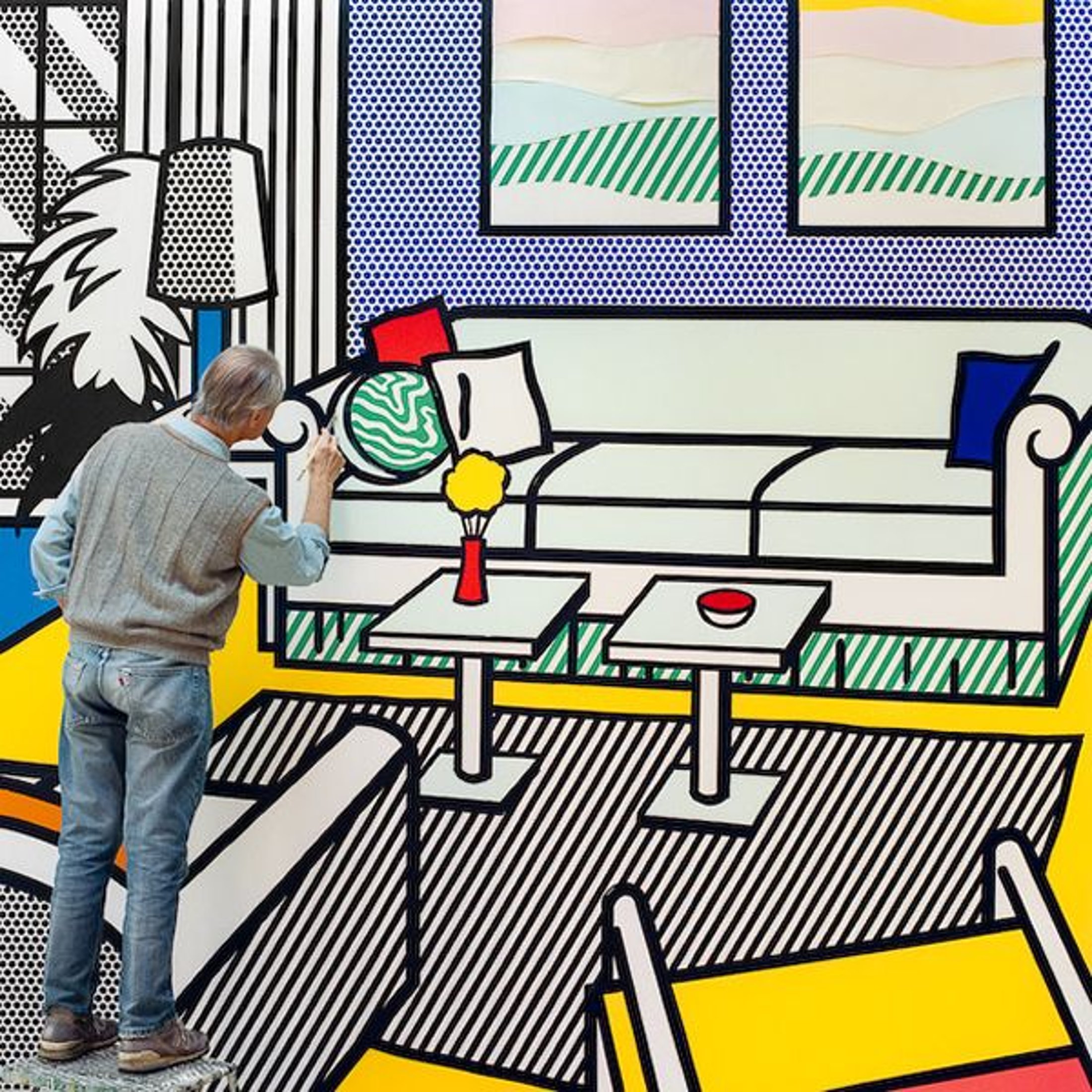Anyone who has had the privilege of visiting a
great artist in his or her studio knows how exciting it can be to witness
creative work in progress — and to check out the sketches, notes, objects
and images that the artist chooses to keep in the space for inspiration.
A new series of photographs has recently emerged that provide an intimate
look at the studio and working environment of Pop artist Roy Lichtenstein.
Photographer Laurie Lambrecht worked as his part-time assistant from 1990
to 1992, helping him to inventory his studio in preparation for his 1993
retrospective at the Solomon R. Guggenheim Museum in Manhattan.
While they were re-visiting files and scrapbooks together, Lichtenstein
encouraged her to make photographs from time to time, and was often pleased
and amused by the results.
Lambrecht’s photos offer fascinating insight into Lichtenstein’s
working processes and source materials, as well as being vibrant works
of art in their own right.
We see stencils of Benday dots and sheets of patterned paper, stacks of
colored pencils, Polaroid snapshots, bulging notebooks, and clippings
from newspapers, Yellow Pages, and comic books. One image shows a handwritten
list of onomatopoeic words for explosions ("Whaaam", "Pling",
"Whump") that Lichtenstein kept, alongside original comic book
images with those words. Another shows pages from his scrapbook full of
“"Crying Girls". We see sculptural pieces, paintings
in progress, and lots of masking tape aligned with precision on working
canvases.
Lambrecht and Lichtenstein grew close over the course of her work with
him, and he became one of her mentors.
“"He was so precise in his visual and aesthetic choices. And
he was a very generous person. We had great conversations," she said.
The process of making the studio images was both collaborative and spontaneous:
"One day Roy walked into the studio and said, ’This would be
a good day to make some photographs. Did you bring your camera?’
and luckily I had ...That was the day I made the two portraits of him
where he seems to be in the painting. It was amazing ... neither one was
posed. He was just touching up final details."
Lichtenstein himself took Polaroids of his paintings as he worked
on them, and the square prints are visible in some of Lambrecht's shots. She
explains, "It was his way of getting a different perspective and
seeing the piece in small scale as he proceeded, just as other artists
use mirrors to imagine how a work will look from a distance or a different
angle."
Lambrecht printed some of her images in the 1990s, but this magical series
has until now remained relatively unknown. This is due in part to Lichtenstein's
untimely death in 1997, which, Lambrecht explains, "made the project feel
different emotionally."
Also, her darkroom-processed C-prints from the early 1990s never captured the bold tactile quality she wanted. Recent advancements in digital printing technology, however, offered her more options and control in the printmaking process.
By printing with ink on rag paper, Lambrecht eventually found a process
that worked.
The resultant images are fresh, vivid and saturated with bold color —
very true to the experiences Lambrecht had when she was working in Roy
Lichtenstein's studio. As such, they offer an insightful tribute to a
past master — as well as a wonderful visual treat.
Pow!
— Zoë Fargher and Jim Casper
Follow LensCulture on Facebook and Twitter daily.


